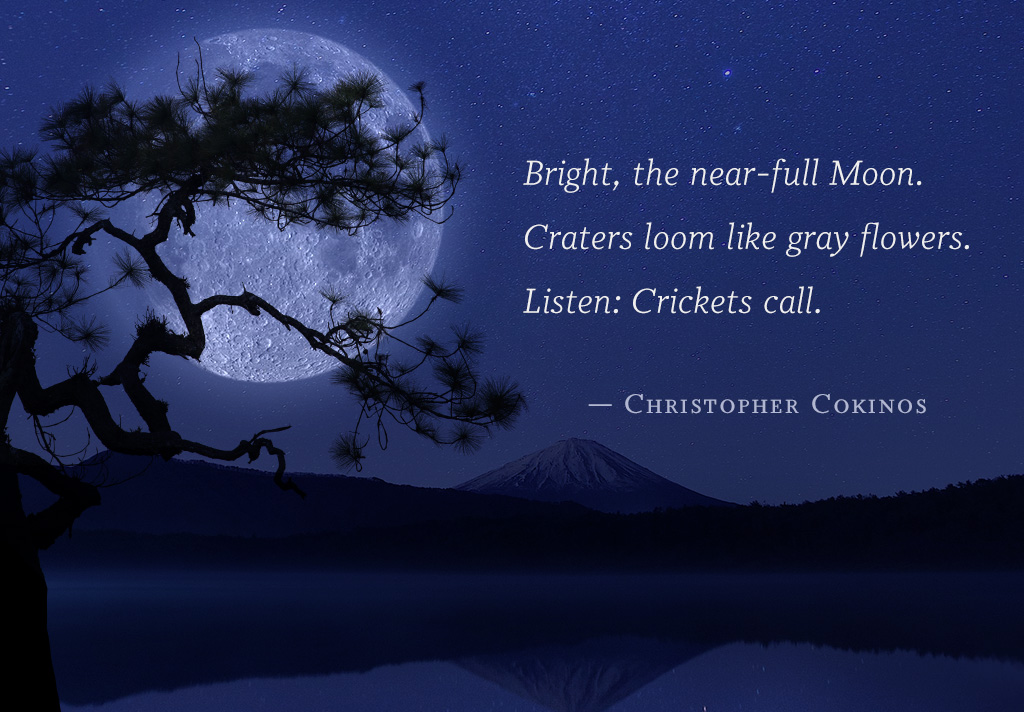Resources
Write a Moon Haiku

Haiku have a long tradition. These short poems originating in Japan in the 17th century focus on clear imagery and memorable contrasts.
Recently, English-language haiku have emphasized a three-line structure of five syllables in line one, seven syllables in line two and five syllables in line three. If you are off a bit, that’s okay! But it can be fun to stay within those guidelines. Sometimes having rules can make us more creative.
How to compose a haiku:
- First line: 5 syllables
- Second line: 7 syllables
- Third line: 5 syllables
Across the globe, there are countless poems written about the Moon. The Moon has been deified (seen as a divine presence). It has symbolized faithlessness (because it changes shapes). It has symbolized rebirth (because it returns every month). And, of course, it’s long been a feature of love poetry.
Anyone can do this, whether you write poetry or not. The point is to capture something interesting to you about the experience. For International Observe the Moon Night, why not commemorate the occasion by writing a haiku about looking at the Moon through a telescope?
For all the poetry written about the Moon, very little of it describes the incredible experience of looking at the wild lunar surface through a telescope. But you can!
Try to describe the view through the telescope. Try to use concrete language that appeals to the senses as opposed to words that are general. You can contrast the telescope view with the naked-eye view. You could even convey something that you hear, smell and see around you on the Earth, wherever you are, surrounded by other people and other species. Haiku sometimes don’t traditionally include similes and metaphors (comparisons) but definitely feel free to try.
If you write a Moon haiku, consider sharing it on social media with the tag #ObserveTheMoon. And have fun. Creative language can express wonder and excitement at nature and what science reveals.
Written by Christopher Cokinos


